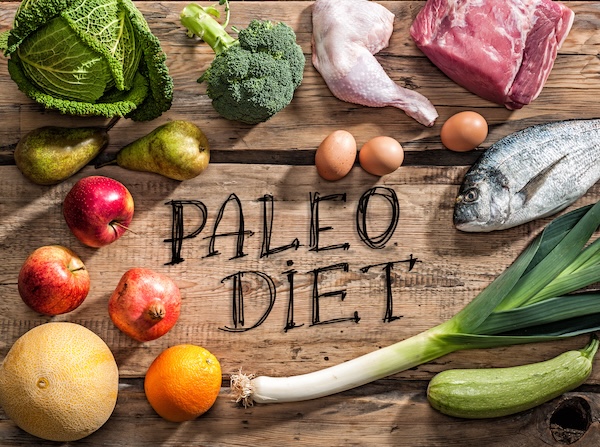Struggling with stubborn belly fat can be frustrating, especially when it’s more than just a cosmetic issue—excess fat around your midsection, particularly visceral fat, can increase your risk of heart disease, diabetes, and other serious health conditions. But the good news is, with the right strategies, losing belly fat is achievable.
In this blog, we’ll explore practical tips for losing belly fat, including dietary changes, effective exercises, and how our Mediterranean Paleo meal plan can support your weight loss journey by providing nutrient-dense meals that promote fat loss and overall wellness.
Understanding Belly Fat
Belly fat is more than just a cosmetic issue; it can significantly impact your health. The body stores fat in different ways, influenced by factors such as age, genetics, and hormonal changes. Understanding the different types of fat in your body is crucial for effective weight loss. Here’s a breakdown of the various types of fat and their implications.
Types of Fat:
- Subcutaneous Fat: This is the fat located just beneath the skin. It is the type you can pinch and is generally less harmful than other types. While some subcutaneous fat is necessary for protection and insulation, too much can still pose health risks.
- Intramuscular Fat: Found within the muscles, this type of fat can affect muscle performance and overall body composition. While it’s normal to have some intramuscular fat, excessive amounts can lead to health complications.
- Visceral Fat: Visceral fat is located deep within the abdominal cavity, surrounding vital organs like the liver, pancreas, and intestines. This type of fat is particularly concerning as it is linked to serious health risks. High levels of visceral fat can lead to insulin resistance, heart disease, high blood pressure, and even certain cancers.
Dietary Changes
Making effective dietary changes is crucial for losing belly fat. Adopting a healthy diet in conjunction with regular physical activity is essential to effectively reduce belly fat. By adjusting what you eat and drink, you can significantly impact your body composition and overall health. Here are some key strategies to consider.
Eliminate Sugary Drinks
Sugary beverages, such as soda and sweetened coffee drinks, can contribute to increased belly fat. These drinks are high in calories but low in nutritional value. When you consume them, your body stores the excess calories as fat, particularly around the abdomen.
To reduce belly fat, it’s essential to eliminate these drinks from your diet. Instead, opt for healthier alternatives like water, herbal teas, or infused water with fruits. These options keep you hydrated without adding unnecessary calories.
Adopt a Mediterranean Diet
The Mediterranean diet emphasizes whole foods and healthy fats, making it a powerful option for reducing belly fat. One of the key components is monounsaturated fatty acids (MUFA), which can help you feel full and satisfied.
Incorporate foods such as olive oil, nuts, seeds, avocados, fish, and yogurt into your meals. These foods not only provide essential nutrients but also promote a healthy weight. The Mediterranean diet is not just about losing fat; it also supports overall well-being.
Increase Fiber Intake
Fiber plays a significant role in reducing belly fat. It helps regulate digestion and can keep you feeling full longer, which may prevent overeating. High-fiber foods include fruits, vegetables, legumes, and whole grains.
Aim to include a variety of these foods in your meals. For example, start your day with oatmeal topped with berries, or add beans to your salads. Increasing your fiber intake can lead to better weight management and improved digestive health.
Reduce Refined Carbs
Refined carbohydrates, like white bread and pastries, can lead to weight gain, particularly in the abdominal area. These foods are quickly digested, causing spikes in blood sugar and increased hunger.
Instead, choose healthier carbohydrate options, such as whole grains, brown rice, and quinoa. These alternatives provide more nutrients and fiber, helping you to feel fuller for longer and support stable blood sugar levels.
Exercise and Physical Activity
Exercise plays a crucial role in losing belly fat and improving overall health. Strengthening and toning abdominal muscles through exercises like crunches and sit-ups is important, although these exercises do not directly target visceral fat. Incorporating different types of physical activity into your routine can help you burn calories, build muscle, and enhance your metabolism. Here are some effective strategies to consider.
Aerobic Exercise
Aerobic exercise is one of the most efficient ways to shed belly fat. Overall body weight reduction through aerobic activities is crucial for improving health and losing visceral fat. This type of exercise raises your heart rate and helps you burn calories. Here are some effective aerobic activities:
- Walking: A simple yet effective way to get moving. Aim for brisk walking for at least 30 minutes daily.
- Running: A high-impact option that can significantly burn calories and reduce body fat.
- Swimming: A low-impact activity that works your entire body while being easy on the joints.
- Dancing: A fun way to get your heart pumping and enjoy physical activity.
The benefits of aerobic exercise extend beyond just weight loss. Regular aerobic workouts improve cardiovascular health, boost mood, and increase energy levels.
Strength Training
Strength training is essential for building muscle mass, which can help you burn more calories at rest. Here are some key points to consider:
- Building Muscle Mass: Muscle tissue burns more calories than fat tissue, even when you are not exercising. This means that increasing your muscle mass can help you lose belly fat more effectively.
- Strength Training Exercises: Incorporate exercises such as squats, lunges, push-ups, and weight lifting into your routine. Aim for at least two sessions per week.
Combining aerobic exercise with strength training creates a balanced fitness program that promotes fat loss and improves body composition.
High-Intensity Interval Training (HIIT)
High-Intensity Interval Training (HIIT) is an effective method for burning fat in a short amount of time. It involves alternating between intense bursts of activity and short recovery periods. Here’s how it works:
- How HIIT Works: The high intensity of this training method increases your heart rate, leading to higher calorie burn both during and after your workout.
- Sample HIIT Workouts: You can create a simple HIIT routine by alternating 30 seconds of sprinting with 1 minute of walking. Repeat this cycle for 15-20 minutes. Other options include cycling, jumping rope, or bodyweight exercises like burpees.
Creating a Caloric Deficit
Creating a caloric deficit is essential for losing belly fat. This means consuming fewer calories than your body burns. Creating a calorie deficit is crucial to lose weight and reduce overall body fat. A consistent caloric deficit leads to weight loss, including the reduction of stubborn belly fat.
Eat Fewer Calories
To shed belly fat, it is vital to understand the importance of reducing caloric intake. Consuming fewer calories helps your body tap into stored fat for energy. Here are some effective strategies for lowering your daily calorie consumption:
- Portion Control: Use smaller plates and bowls to help manage portion sizes. This simple change can prevent overeating without feeling deprived.
- Mindful Eating: Pay attention to what you eat. Chew slowly and savor each bite. This practice can help you recognize when you’re full, reducing the chances of overeating.
- Plan Your Meals: Prepare meals ahead of time. This helps you avoid impulsive eating and allows you to make healthier choices.
Tips for Reducing Caloric Intake
Implementing some practical tips can make it easier to cut calories:
- Choose Whole Foods: Focus on whole, unprocessed foods. These foods are typically lower in calories and higher in nutrients, making them more filling.
- Limit Snacks: Reduce the number of snacks between meals. If you do snack, opt for healthy options like fruits, vegetables, or nuts.
- Stay Hydrated: Sometimes, thirst is mistaken for hunger. Drink plenty of water throughout the day to stay hydrated and curb unnecessary snacking.
Lifestyle Modifications
Making lifestyle changes is crucial for losing belly fat and maintaining a healthy weight. Two significant areas to focus on are stress management and sleep quality. Both factors can greatly influence your body’s ability to shed excess fat.
Reduce Stress
Stress can have a profound effect on your body, particularly when it comes to storing fat. When you are stressed, your body releases the hormone cortisol. Elevated cortisol levels can lead to increased appetite and cravings for unhealthy foods, often resulting in weight gain, especially around the abdomen.
To combat stress, consider incorporating activities like yoga or meditation into your daily routine. These practices can help lower cortisol levels and improve your overall mental well-being. Additionally, engaging in hobbies, spending time with loved ones, or simply taking a walk can also help reduce stress levels.
Improve Sleep
Sleep plays a vital role in weight regulation. Poor sleep can disrupt hormones that control appetite, leading to increased hunger and cravings for high-calorie foods. It can also affect your metabolism, making it harder to lose belly fat.
To improve your sleep quality, establish a consistent sleep schedule. Aim for 7-9 hours of sleep each night. Create a relaxing bedtime routine by limiting screen time before bed, keeping your bedroom dark and cool, and avoiding caffeine in the evening. Small changes, like reading a book or listening to calming music, can also promote better sleep.
Monitoring Progress
Tracking your progress is essential in the journey to lose belly fat. In addition to weight, tracking your body fat percentage is crucial for understanding the impact of your diet and exercise on different types of body fat. It helps you stay motivated and make necessary adjustments to your diet and exercise routine. Here are some effective ways to monitor your progress beyond just the scale.
Use Multiple Measures
Relying solely on the scale can be misleading. Weight can fluctuate due to various factors, such as water retention and muscle gain. Monitoring visceral belly fat levels is crucial as it has significant health implications. Instead, consider these additional measures to get a clearer picture of your progress:
- Body Measurements: Use a measuring tape to track your waist circumference, hips, and other areas. This can provide insight into fat loss that the scale might not show.
- Clothing Fit: Pay attention to how your clothes fit. If they start feeling looser, it’s a good sign that you are shedding belly fat.
- Progress Photos: Take photos of yourself every few weeks. Visual comparisons can highlight changes in your body shape that may not be obvious day-to-day.
- Fitness Levels: Keep track of your performance in workouts. If you can lift heavier weights or complete more reps, it indicates improvements in your fitness level.
Importance of Measurements and Qualitative Feedback
In addition to quantitative measures, qualitative feedback can also provide valuable insights. Consider the following:
- Energy Levels: Notice how your energy levels change as you adopt healthier habits. Increased energy can be a sign of improved health and fitness.
- Mood and Well-Being: Reflect on your mental health. A positive mindset can often accompany physical changes.
- Health Metrics: If possible, monitor your blood pressure, cholesterol levels, and blood sugar. Improvements in these areas are strong indicators of better health.
Take the Steps Toward a Healthier Path With Upstate Weight Loss Solutions!
Ready to take the next step in your weight loss journey? Our team at Upstate Weight Loss is here to support you every step of the way. Whether you’re looking for personalized meal plans, expert guidance, or motivation to stay on track, we have the tools and experience to help you reach your goals.
Contact us at (864) 514-6463 for more information!




